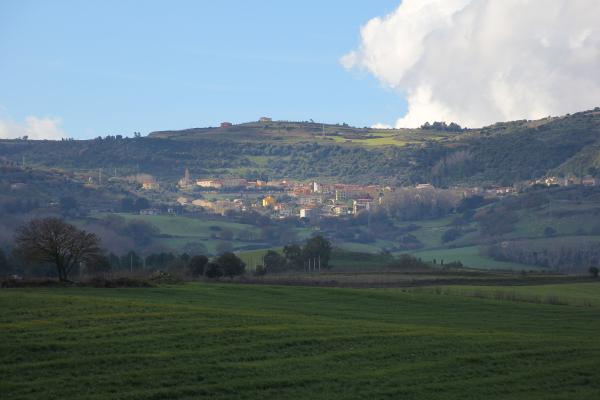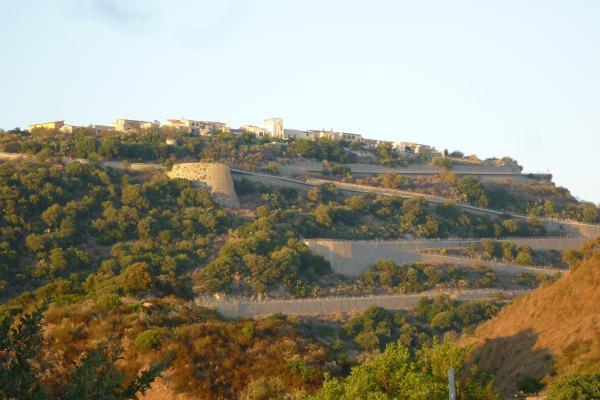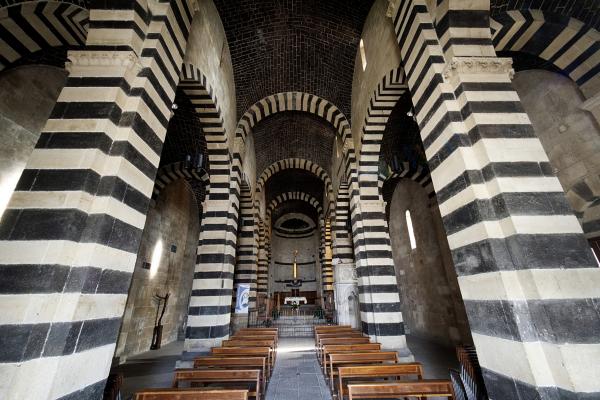In the mid-14th century, during a plague epidemic that hit the historic territory of Meilogu, a family from Thiesi went to live outside the village to avoid contamination. According to a folk tale, the youngest member of the family, Antine – short for Constantine in Logudoro dialect -, was wandering through the fields when he discovered a cave with marvellous painted decorations. He described it to his parents as a ‘palace’ and began to visit it more and more frequently. Orphaned, he moved there, living in the company of the Janas, mythical fairies who lived in the ravines dug out of the rock. He was eventually found lifeless here, with his eyes wide open, intent on admiring the paintings until his very last moment. So far, all this is legend, while the extraordinary decorations adorning the walls of one of the four tombs in the necropolis of Mandra Antine, known as ‘Antine’s hideaway’, are absolutely real. At the same time, the paintings are an enigma and a very rare phenomenon: only a few cases of multicoloured decorations have been found inside a prehistoric tomb in the whole of the Mediterranean basin.

Nuragic or pre-Nuragic archaeology
It is one of the most important, fascinating and mysterious Domus de Janas burial grounds, located at the foot of a mountain in the Logudoro-Meilogu area, in the north-west of Sardinia
It is one of the most important, fascinating and mysterious Domus de Janas burial grounds, located at the foot of a mountain in the Logudoro-Meilogu area, in the north-west of Sardinia
See this place because...
Few Domus de Janas show such colourful and decorations still intact and it is one of the greatest pieces of evidence of the figurative ability of the proto-Sardinian people in the Neolithic Age
Pictures and videos
Nearby
Come arrivare
Uscire dall'abitato di Thiesi in direzione di Ittiri e dopo aver percorso 2,5 km, svoltare a sinistra per Romana. proseguire per 5,4 km e girare a destra in una strada a fondo naturale, segnalata da un cartello turistico, che dopo 1,5 km conduce alla tomba di Mandra Antine. Il contesto ambientale La necropoli è scavata su un costone trachitico, nella regione del Meilogu, nella Sardegna nord-occidentale.
You may also like
More attractions in the vicinity
Nearby hotels and accommodations

THIESI
6 km

THIESI
6 km

Bed and breakfast
THIESI
6 km


















